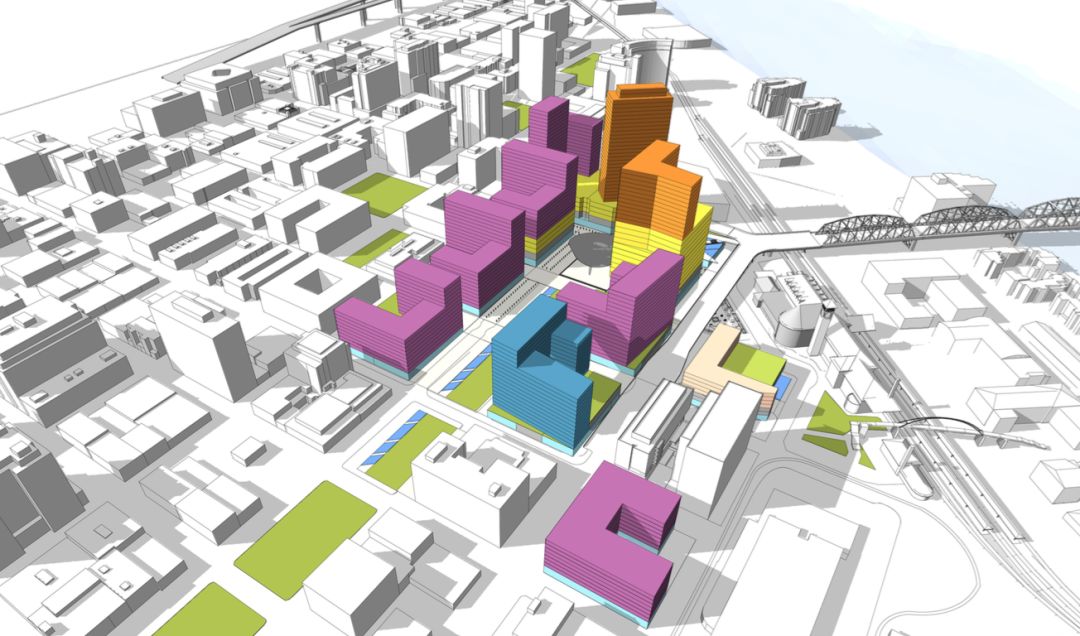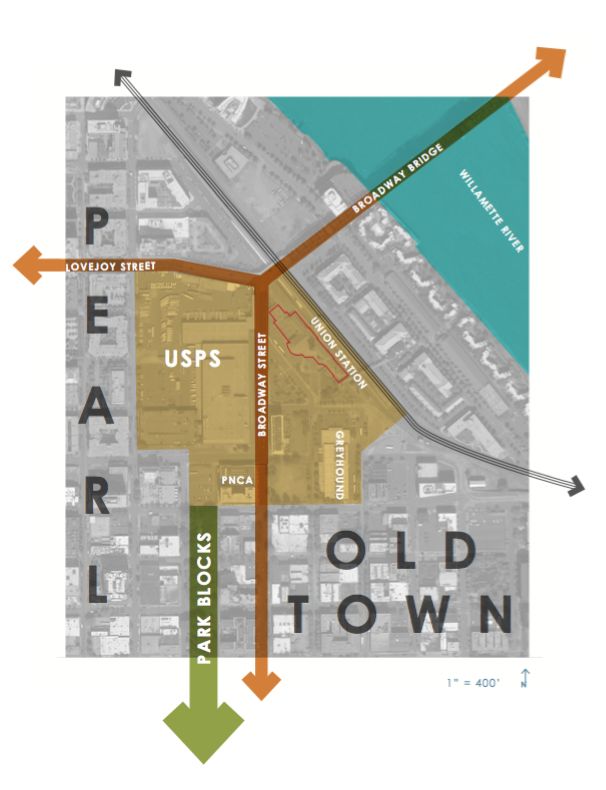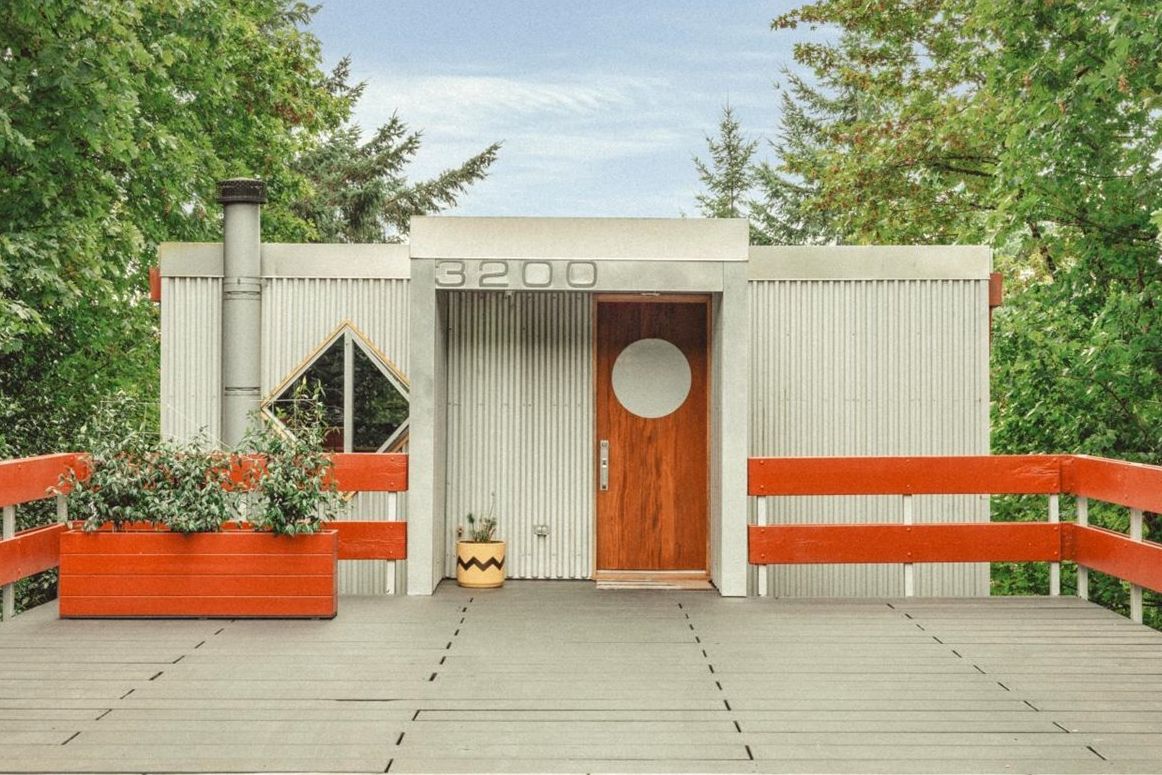Here's What the Post Office Site in Northwest Could Look Like

A development proposal for the USPS Post Office site in Northwest Portland
Image: Portland State University
Back in the day, Portland’s federal post office, conveniently situated near Union Station, was a design pioneer. The facilities boasted the best that the early 20th century had to offer in mail mobilization. But by 1962, an addition was required to house the new fleets of mail trucks that would serve the expanding metro area.
Five decades later, the main post office is an eyesore of a relic, and it’s taking up valuable space in the Pearl, the poster child for Portland’s recent urban renewal projects. The 14-acre plot of land has long been slated for redevelopment, and now the question is—what’s the plan?

The nine students in Portland State’s Master of Real Estate Development program have an idea. Earlier this June, professor Gerard Mildner and his team of students began research on a project that would connect Old Town and the North Park Blocks to the Pearl District.
“It’s a piece of the puzzle that’s been missing for a long time,” says Mildner, who is the academic director of the PSU Center for Real Estate. “It’s ridiculous to have a postal sorting unit in the middle of a high-rent district just because our mail used to come from Chicago on a train.”
The plan was conceived in coordination with the architects at ZGF, the firm responsible for designing Director Park, which received an American Architectural Award in 2012. Union Park, as the concept has been dubbed, would include not only an expansion of the North Park Blocks to promote more walking, biking, rolling, jogging, and public transit trips, but also housing units for 3,300 new residents, 30 percent of which would be affordable. The underbelly of the Broadway viaduct would transform into a unique public hub, complete with food carts and lush wetlands. Extensions of Kearney and Irving would be “woonerfs,” a delightfully Dutch word for streets that put pedestrians first but allow slow-moving car traffic.
“We’re hoping that what is actually built in the next 20 years will end up being very similar to what we’ve come up with,” says Colin Kelley, a student who focused on market research for the Union Park concept.
It sounds almost too good to be true, but Mildner says it’s no pipe dream—the Portland Development Commission will put the project out for bid to the development community next year. “This development project could very well be the biggest in Portland’s history,” says Kelley. “It would be an unprecedented move towards the city’s future.”




